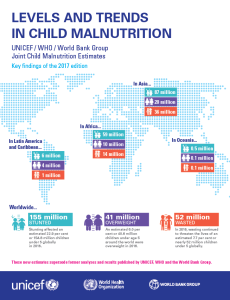News
Costly Nutritious Food Driving Up Malnutrition In India
India’s malnutrition problem has been acknowledged widely as a major public policy challenge. The shortage of social amenities such as lack of hygienic toilets and the low social status of women have contributed towards the spread of diseases, limited food intake by women and increased poverty. All this ultimately resulting in the larger malnutrition problem.
A new World Bank working paper by Felipe Dizon of the World Bank and Anna Herforth, an independent consultant, has highlighted another important factor: the rising prices of nutritious food items in the country. The paper shows that the price of nutritional food items in India and three other South Asian countries (Sri Lanka, Pakistan, and Afghanistan) has been increasing at a faster rate than the price of a typical food basket, with the gap widening over the years.
MALNUTRITION MENACE
Dizon and Herforth use two methods to estimate the cost of nutritious food items. The first method relies on calculating the cost of a recommended diet (CoRD) to estimate the cost of meeting food-based dietary guidelines using food prices and national dietary guidelines.
The second measure, the nutritious food price index (NPI) tracks changes in the price of nutritious foods by reweighting the standard food basket of the consumer price index (CPI) using weights that reflect the nutrition value of food items, as opposed to ones that reflect spending on food items. The paper shows that between January 2014 and August 2017, the price of nutritious food items (such as vegetables, fruits, seafood, and meat products) have increased the most in India, while less nutritious items (such as cereals, sugars, oils and fats) have risen the least.
The paper argues that food policy in most South Asian countries is focussed majorly on calories and cereals and very little on nutrition-rich foods.





















